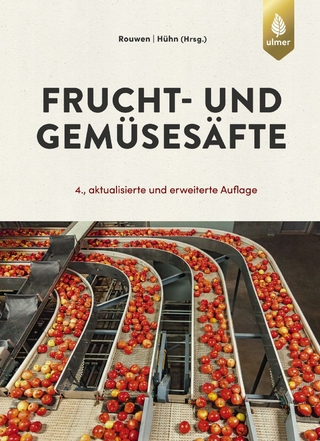
Basic Protocols in Encapsulation of Food Ingredients
Springer-Verlag New York Inc.
978-1-0716-1651-2 (ISBN)
Authoritative and cutting-edge, Basic Protocols in Encapsulation of Food Ingredients aims to give guidance on encapsulation techniques and an understanding on tools, materials, and supplies to implement innovative approaches.
This volume provides a comprehensive introduction into methods and procedures on encapsulation of sensitive food nucleus. Chapters guide readers through different strategies to encapsulate bioactive compounds and cells. Additionally, chapters will detail methods on three major issues; the nucleus to be encapsulated, the carrier material, and the encapsulation technique.
Authoritative and cutting-edge, Basic Protocols in Encapsulation of Food Ingredients aims to give guidance on encapsulation techniques and an understanding on tools, materials, and supplies to implement innovative approaches.
Encapsulation of hydrophobic compounds in sugar matrixes by freeze-drying.- Stabilization of bioactive molecules through the spray-drying technique: Current applications and challenges.- Calcium alginate capsules. Particularities of natural antioxidants and plant germoplasm systems.- Pectin-iron capsules: a non-traditional delivery system based on ionic gelation.- Encapsulation of lactic acid bacteria in sugar matrices to be used as starters in the food industry.- Measurements of viability and damage in microencapsulated bacterial cells with flow cytometry.- Microfluidic glass capillary devices: an innovative tool to encapsulate Lactobacillus plantarum.- State-of-the-art of encapsulation based on spray-drying technique for carotenoids from plant material. Methods, mechanism.- Freeze-drying encapsulation as mechanism of choice in oils. Methods and mechanism.- Development of novel inulin-based electrosprayed microparticles for the stabilization and delivery of phlorotannin extracts.- Nanostructures for the stabilization and delivery of lactic acid bacteria.- Fish oil encapsulation using soy proteins as wall material: protocols to ensure PUFA protection.- Obtention and characterization of cyclodextrins complexes for the development of food ingredients.- Stability of antioxidants encapsulated in freeze-dried prebiotic matrices.- Immobilization of β-galactosidase in calcium alginate beads.- Bacterial S-layer proteins for stabilization of food ingredients encapsulated in liposomes.- Fructosyltransferase immobilization via entrapment.
| Erscheinungsdatum | 23.11.2022 |
|---|---|
| Reihe/Serie | Methods and Protocols in Food Science |
| Zusatzinfo | 34 Illustrations, color; 12 Illustrations, black and white; XIII, 200 p. 46 illus., 34 illus. in color. |
| Verlagsort | New York, NY |
| Sprache | englisch |
| Maße | 178 x 254 mm |
| Themenwelt | Technik ► Lebensmitteltechnologie |
| Schlagworte | carotenoids • electrospinning • microfluidics • Polyphenols • polysaccharides |
| ISBN-10 | 1-0716-1651-X / 107161651X |
| ISBN-13 | 978-1-0716-1651-2 / 9781071616512 |
| Zustand | Neuware |
| Haben Sie eine Frage zum Produkt? |
aus dem Bereich


